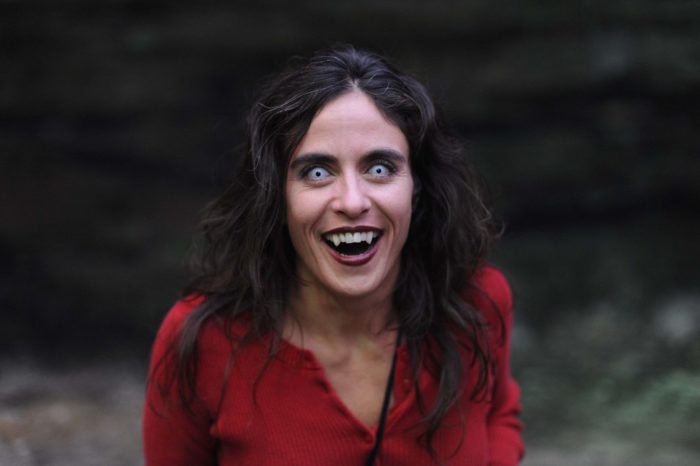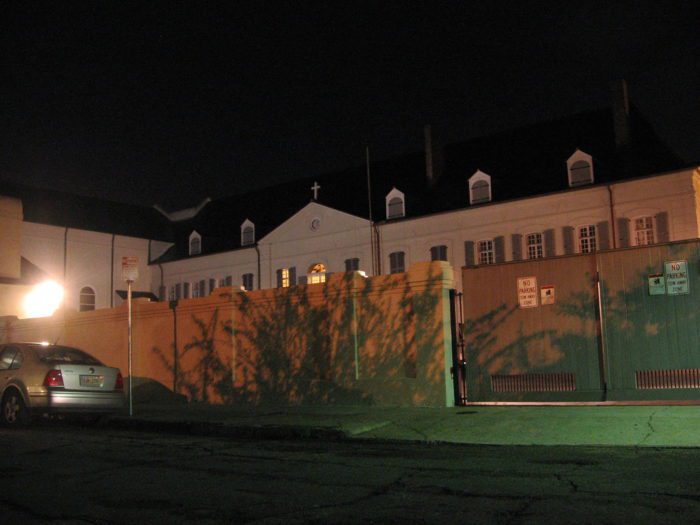Anne Rice is responsible for making New Orleans the new vampire capital of the world. This distinction formerly belonged to Transylvania, home of Count Dracula, the titular main character from Bram Stoker’s 1897 gothic horror classic. New Orleans does have a supposedly true vampire tale that dates back way before Rice’s novels hit bookstore shelves. The story of the Casket Girls of New Orleans dates back to colonial times and the birth of the city.
During the early 18th century, France colonized parts of North America, including current-day Canada as well as Louisiana. The colonists were predominantly male and the governors of the French colonies were concerned. With no French women around, French Catholic men were turning to pagan Native American women for companionship. In the eyes of the 18th-century governor, these men were turning away from their faith.
Louisiana governor, Jean Baptiste Le Moyne de Bienville, sent a letter to King Louis XIV asking that young pious, virtuous, and marriageable women be sent to the colony. In 1728, a group of young women and girls arrived in New Orleans aboard the La Nouvelle Orleans. These women became known as Filles a la Cassette which became “Casket Girls.” The word casket had a much different meaning then: a cassette or casket were chests or luggage to store belongings. Once they began to settle into the colony, the women weren’t too pleased with their new lives.
When the male colonists saw the women, they remarked about how pale they were. The women were so pale that their skin burned and blistered in the sun.
According to many sources, these women were so strange-looking that many of them were rejected by the men. Those who did marry reportedly were mistreated by their husbands who continued to have affairs with Native American women. Accounts tend to differ but many sources tie the Casket Girls to the Ursuline Convent, one of the oldest structures in New Orleans.

According to Ghost City Tours’ “The Casket Girls” page, women who failed to find husbands were forced into prostitution, and eventually, King Louis XIV ordered that the Casket Girls return to France. According to Ghost City, the Ursuline nuns took the girls’ “caskets” up to the third floor of the convent.
One of the oldest structures in New Orleans, the Ursuline Convent, was built in 1734 and rebuilt in 1751. The convent is currently a tourist attraction, including a ghost tour and a vampire tour. The third floor is reportedly off-limits during tours.
In one version of the story, after the nuns put the girls’ caskets on the third floor, the nuns went upstairs at a later time to find that the caskets were empty. The nuns searched for but never found the belongings that were supposed to be in the caskets. They believed that the girls may have smuggled in something sinister that had escaped. The third-floor windows are also nailed shut with nails that were blessed by the Pope. Rumors about vampires have surrounded the convent since the early 20th century.
Ghost City quotes a tour guide: “’It is there,’ the guide says, ‘that the Casket Girls still remain locked away. Without the nails blessed by the Pope, the young women who once hailed from France would be out, roaming the streets to feast on the blood of the living.’”
According to other sources, the Casket Girls eventually moved into the convent. According to a 2021 article, “My Granny was a Vampire-Smuggling Casket Girl: a (possibly) true story,” by Michael DeMocker, the third-floor windows were sealed off to protect the virtue of the women. DeMocker writes that hand mirrors that the girls brought with them disappeared and crops failed. DeMocker writes: “Whispers began that the vampire-pale Casket Girls had brought an evil with them from the Old Country. Eventually, the nuns threw the Casket Girls out and closed up the third-floor attic forever.”

DeMocker writes that years later a man repairing the convent’s leaky roof found the empty caskets and made the vampire connection. “Many believed the flying vampires wanted to return to their caskets on the convent’s third floor, which is why the windows were permanently sealed with 800 screws made of silver that had been blessed in Rome by the Pope himself. It turns out the windows were sealed not to keep the virtue in but to keep the evil out!”
In the video, “The Casket Girls of New Orleans,” YouTuber Stephanie Harlow talks about interviewing Marita Woywod Cradle, author of New Orleans Vampires: History and Legend (Haunted America) (2017). Cradle told Harlow that she went up to the convent’s third floor. Cradle described seeing a Dutch-style door (where the top half only opens) and chains hanging from the ceiling. Cradle was told that the nuns cared for the mentally ill at the convent. The patients were chained up. The Dutch-style door allowed for the nuns to pass the patient’s food, etc. without coming into direct contact with them.
More than one source tells the story of two paranormal investigators who set up camp in the convent’s courtyard in 1978. They had cameras filming the third-floor windows. The cameras malfunctioned. The couple fell asleep and were supposedly found dead, drained of blood, the next morning on the steps of St. Mary’s Church.
I doubt that there is any truth to the story. No names or specific details are given, and, just as I thought, when I tried looking up more information, I found the same story rehashed in different articles. No names or any further details.

The Ursuline Convent Casket girls weren’t unique. They were the fourth wave of girls and women sent from France to North America to marry and procreate.
In 1663, the first group of women and girls arrived in Canada. Called the Filles du Roi (the King’s Daughters), these young women were between the ages of 12-25. They were chosen according to strict criteria and were required to provide letters of recommendation. According to Ghost City, this first wave of 800 women arrived between 1663 and 1673. Some died during the voyage, others were sent back to France after failing to meet the standards of being a Filles du Roi, and some thought twice about taking the trip and didn’t get on the boat.
A second group, dubbed The Pelican Girls, were shipped to the French colony in Biloxi. Named after the ship that carried them to North America, the group consisted of 23 women and girls, ages 14 to 19.
Ghost City describes the third wave of women as arriving in 1721, the Baleine Brides. However, according to Ghost City, King Louis XIV looked to the prisons to form this group. A group of 88 female ex-cons arrived in Mobile on January 8, 1721.
The Casket Girls—the name alone is dark and macabre. Their description is mysterious. Their extremely pale skin was so sensitive to sunlight it would redden and blister. Of course, there are the caskets they carried with them off the boat. They certainly check off many boxes on the list of vampire characteristics. Of course, there are very simple and logical natural explanations. First of all, a casket or cassette was simply a box, a case, or a trunk to keep belongings in—not a container for a corpse. Their extreme pallor was the result of spending the past six months below the deck of a ship. As for the paranormal investigators, without specific names or details, I think it’s just some local lore, a story made up that got passed around.
If anything, the story of the Casket Girls highlights the misogynistic, racist, and ethnocentric attitudes at the time. The Casket Girls were sent to a strange land basically to breed with strange men to “save” them from Native American women. As far as them being vampires, no one seems to know the exact origin of the tale.



